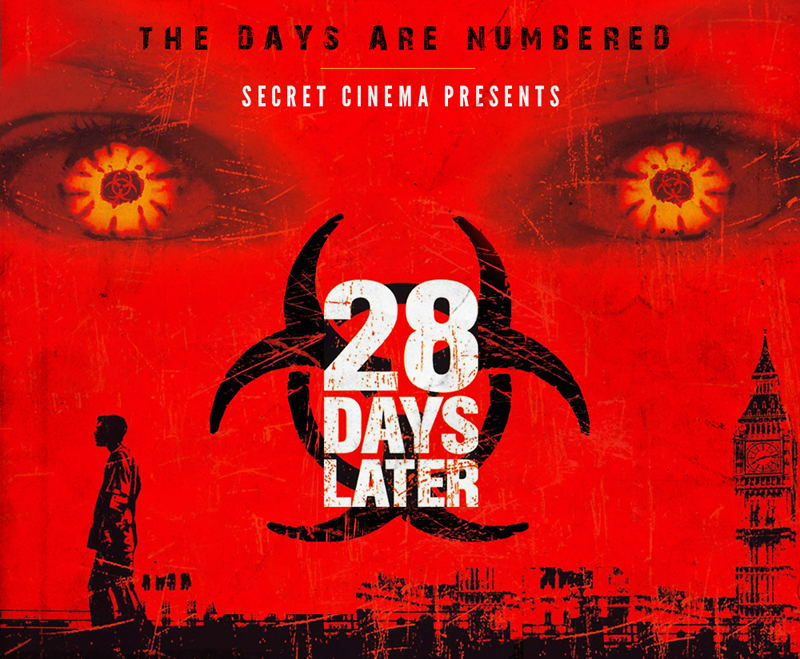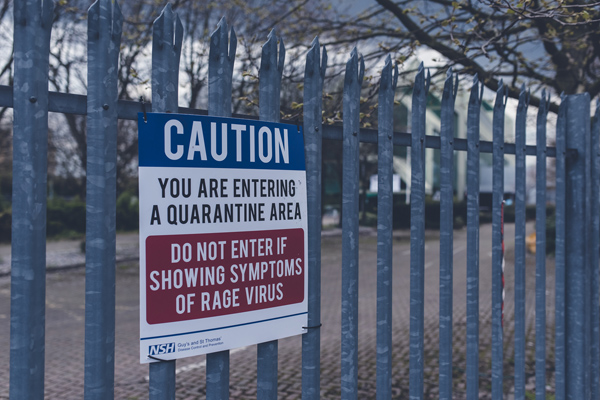
Five Things Secret Cinema Presents 28 Days Later Got Right
Having now been something of a cult event for a number of years, Secret Cinema was initially propelled into the mainstream a couple of years ago with their hugely ambitious production of Back to the Future which, despite a few teething problems, was universally praised. Last year they followed it up with a second large scale endeavour in the form of The Empire Strikes Back which was equally well received, cementing their reputation as purveyors of the ultimate cinema experience.
This year sees them breaking new ground again in London by taking the plunge into the world of horror with Danny Boyle’s 2002 not zombie film 28 Days Later, and This Is Horror got the chance to attend this spectacular to see just how infectious it was. Given the nature of Secret Cinema, we can’t really divulge too many details or surprises, but suffice to say we were very impressed, and can reveal five things that Secret Cinema got right with their production.
The Choice of Film
For Secret Cinema’s first foray into horror, they couldn’t really have chosen a better film. Whereas their previous large scale productions—Back To The Future and The Empire Strikes Back—have had more of a sandbox feel to them, allowing participants to largely roam at their own pace and accord, 28 Days Later is more of a linear experience and works brilliantly for it.
Whether future horror endeavours could recreate the sandbox experience effectively—perhaps something like Friday 13th, with campers being bumped off and disappearing sporadically—remains to be seen, but the journey from the main gates to the screening room is an exhilarating, exciting and exhausting (both mentally and physically) experience that won’t soon be forgotten by those who have taken part.
The Location

Razor wire, army vehicles, menacing warning signs, pre-recorded public service announcements—all of these greet us as we arrive (and it doesn’t hurt that it’s raining too, adding to the overall sense of doom and gloom) and instantly immerse us in the world of the zombie apocalypse (yes, yes, they’re not really zombies, but they might as well be) before we’ve even stepped inside.
The Atmosphere
When Jim wakes up in 28 Days Later he doesn’t quite know what is going on, just that something is not at all right, and stumbles in confusion from one set piece to another before stumbling across a couple of survivors who clue him in on the end of the world.
The sets, too, are nothing short of stunning. Incorporating familiar scenes from the film along with other set pieces created especially for this event, the sense of panic and fear is turned up to eleven as we’re guided, often at a run, through a lengthy experience that never quite becomes terrifying but is undoubtedly exhilarating.
The Addition to the Mythology
Much of the chaos and carnage has already happened in the film by the time Jim wakes up in his hospital bed, and we’re given only verbal descriptions of certain events and left to fill in the blanks with our imaginations. What Secret Cinema does, however, is to put us right in the heart of the experience at day one and then propel us at great velocity through the early days of the outbreak. One set piece in particular introduces us to a still sane character that we only encounter post infection in the film, and one particular high rise location that is recreated (not to give too much away) offers up further insight into the days and weeks before the film.
The whole experience of being processed by the army is interesting, too, giving us a look at what was being done to try and curb the initial outbreak, and how the soldiers dealt with ever increasing numbers of people desperate for information and guidance. By effectively filling in some of the gaps like this, the 28 Days Later experience feels even more immersive as we’re not only reliving some of it, but learning more about the end of the world as we know it.
The Screening Itself
Just when you think that Secret Cinema have pulled all of their bloody rabbits from their ruined top hats, the final surprise of the evening involves the way that the film is screened. Rather than showing 28 Days Later in the conventional manner as you might realistically expect, we’re ushered into a large hangar sized room that we can’t possibly describe for fear of ruining your experience should you be lucky enough to go, but suffice to say that if you’re familiar with the opening few minutes of the film then you can probably use your imagination to envisage the set up.
Secret Cinema presents 28 Days Later is running until 29 May 2016.
Tickets are available at http://secretcinema.org/tickets/28dayslater
RICHARD COSGROVE
